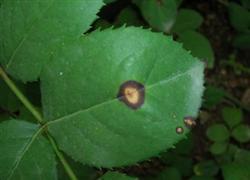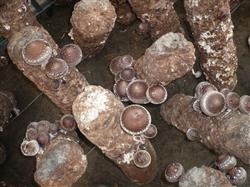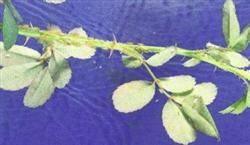How to prevent and cure brown spot of rose

Brown spot mostly occurs in the hot and muggy rainy season. Purple-brown round spots appear on the front of the leaves, with slightly ciliated edges, and there are many small black spots in the center. These small black spots are the conidia of pathogens. After the small black spots split, the spores were released to spread the disease. It can also spread with Rain Water. Brown spot depends on conidia to survive the winter on plants or fallen leaves, so before winter, all the affected leaves should be removed and burned, then sprayed with Baumite sulfur mixture, and then transferred to the milk cellar for storage. Do not spray water on the plant again after the disease, otherwise it will spread faster and often make the rose leaves of the whole garden wither and fall off. At the initial stage of the disease, 1000 times of carbendazim should be sprayed immediately, and the disease can be controlled by spraying twice. Carbendazim is more expensive, and it can also be sprayed with Baume 0.2-0.3 degrees stone sulfur mixture during the growing period.
- Prev

Soil-covering cultivation techniques of Lentinus edodes
First, the soil-covered cultivation of Lentinus edodes can make Lentinus edodes have large body, thick meat and more flower mushrooms by using the techniques of natural color conversion, open mushroom production, enlarging the difference between dry and wet, and implementing the water management of alternating dry and wet. Second, compared with the conventional method, the output can be increased by 30% to 40%. Third, the bacterial stick can change color naturally after taking off the bag and covering the soil, and it is not easy to be infected. ...
- Next

Control methods of APHIS gossypii
APHIS gossypii belongs to Homoptera and Aphidae. Nymph aphids, adult aphids harm rose, rose, ten sisters, etc., due to the effective stagnation of the growth of young leaves and buds, it is not easy to stretch, and the ornamental value is often affected by feces adhering to the leaves. First, the morphological characteristics of wingless parthenogenetic aphids are larger, ovoid and 4.2 mm long.
Related
- Fuxing push coffee new agricultural production and marketing class: lack of small-scale processing plants
- Jujube rice field leisure farm deep ploughing Yilan for five years to create a space for organic food and play
- Nongyu Farm-A trial of organic papaya for brave women with advanced technology
- Four points for attention in the prevention and control of diseases and insect pests of edible fungi
- How to add nutrient solution to Edible Fungi
- Is there any good way to control edible fungus mites?
- Open Inoculation Technology of Edible Fungi
- Is there any clever way to use fertilizer for edible fungus in winter?
- What agents are used to kill the pathogens of edible fungi in the mushroom shed?
- Rapid drying of Edible Fungi

